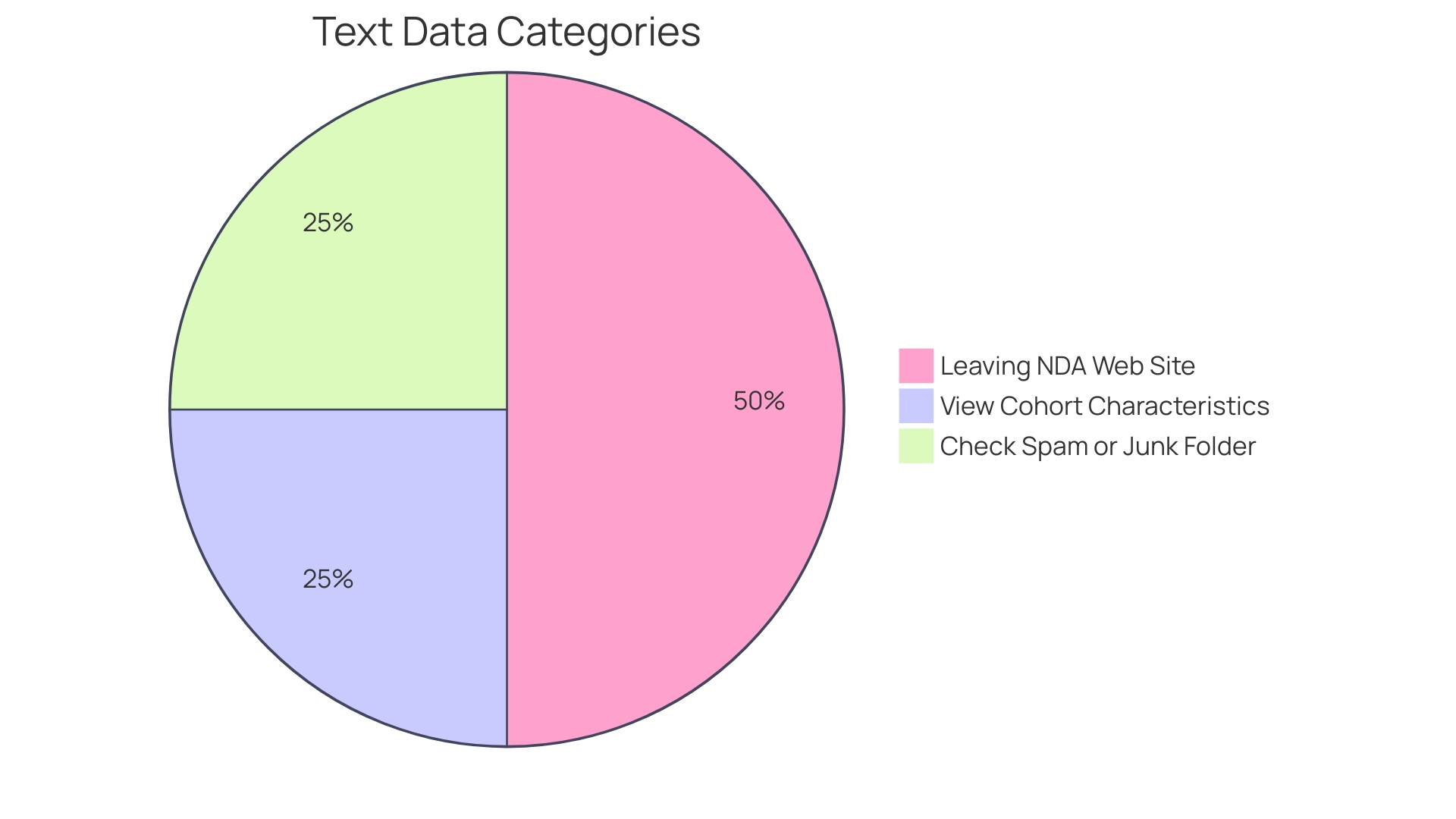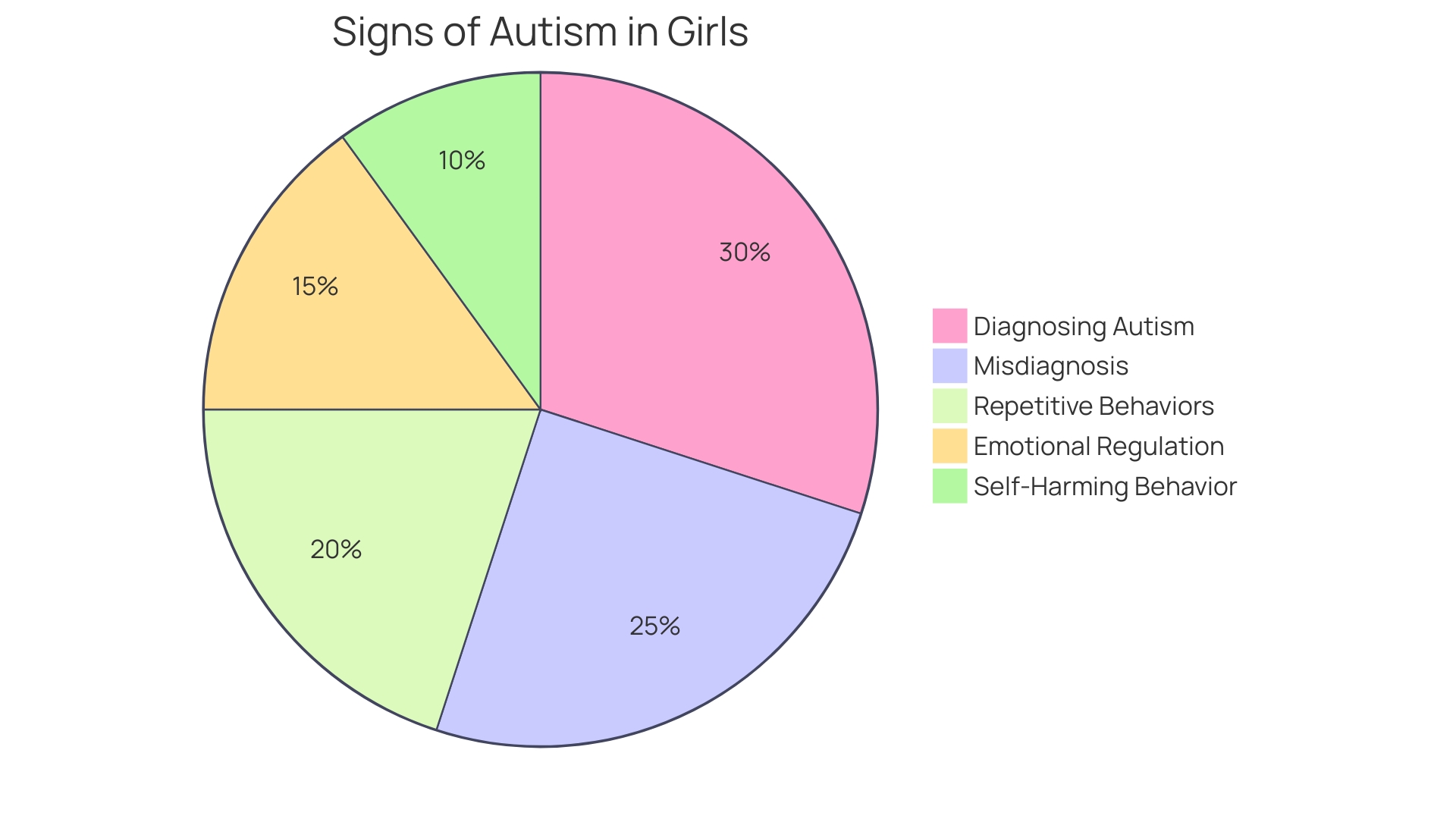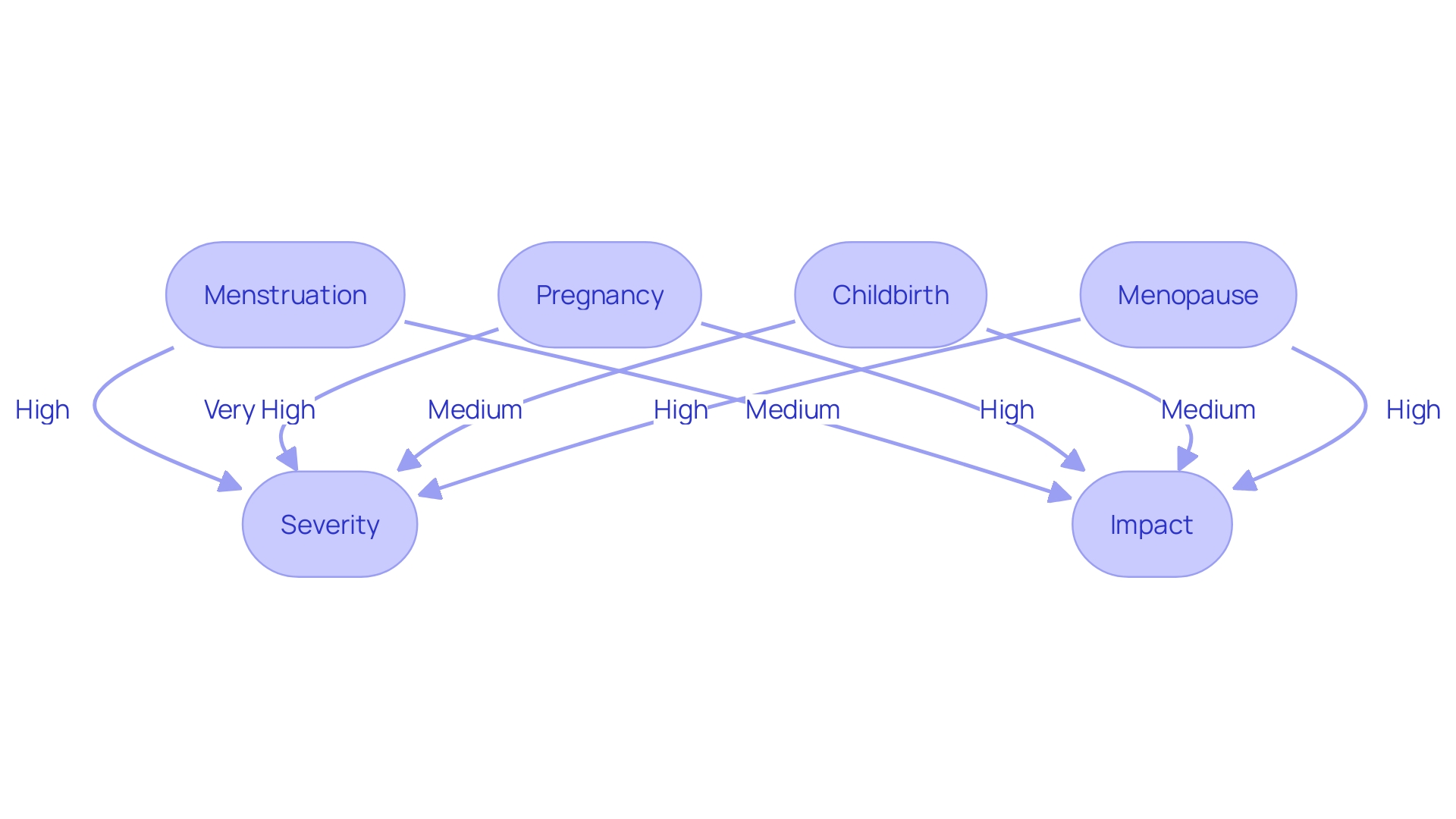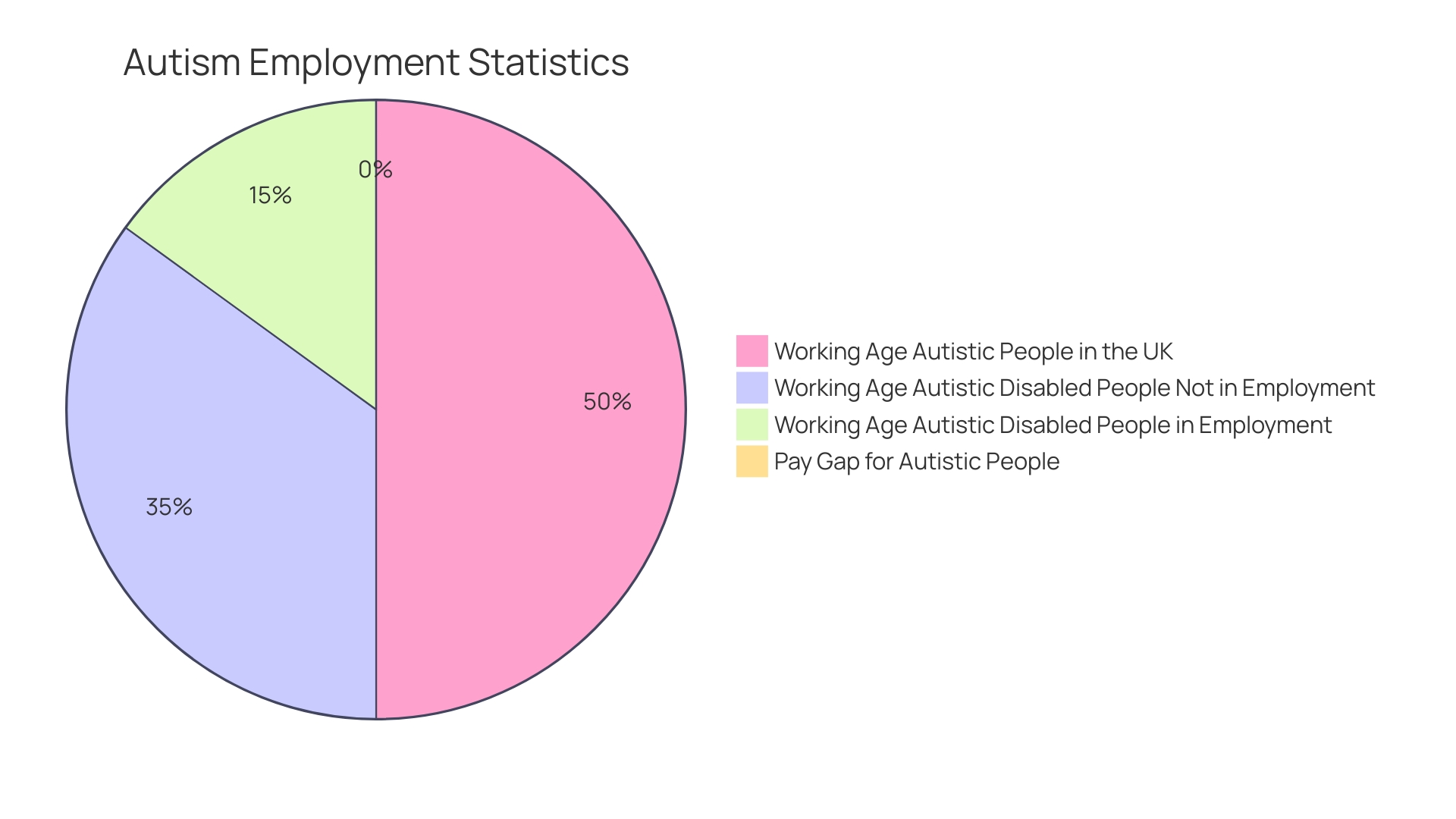Introduction
Recognizing and understanding autism in women can be a complex and challenging task. The unique presentation of autism in females often differs from what is typically observed in children or males, leading to underdiagnosis and misdiagnosis. Astonishingly, research suggests that 80% of autistic females go unrecognized or receive incorrect diagnoses by the age of 18.
This oversight is concerning, as autistic women are more likely to be diagnosed with psychiatric conditions compared to autistic men. The historical understanding of autism focused on overt and male-centric symptoms, but our evolving knowledge now recognizes the complex ways autism affects individuals. Women often adopt coping mechanisms like camouflaging, where they mask their autistic traits to fit in socially.
However, this can come at a great cognitive and emotional cost. Societal expectations and cultural norms further complicate the diagnosis process for autistic women. Without recognition, they may miss out on essential support and accommodations, leading to significant mental health challenges.
Increasing awareness and understanding of autism in women is crucial to ensure they receive the recognition and care they deserve. It is imperative for medical and mental health providers to be equipped with the knowledge to recognize the less obvious signs of autism and move beyond the myths and misinformation that have historically clouded the diagnostic process. By improving our understanding, we can foster a more inclusive and supportive society for autistic women and their families.
Prevalence and Underdiagnosis of Autism in Women
Recognizing the signs of autism in adult women is a critical and nuanced task, as the presentation can be substantially different from what is typically observed in children or males. Autism, a lifelong neurodevelopmental condition, often manifests uniquely in women, contributing to the underdiagnosis and misdiagnosis in this population. Research indicates a staggering 80% of autistic females go unrecognized or are incorrectly diagnosed by the age of 18.
This oversight is particularly concerning given that by age 25, 77% of autistic women are likely to have been diagnosed with a psychiatric condition, compared to about 62% of autistic men.
Historically, autism was understood through a narrow lens, with early diagnostic criteria focusing on more overt and male-centric symptoms. However, as our understanding of autism has evolved, so too has our recognition of the complex ways it affects individuals. The concept of camouflaging, for instance, where individuals mask their autistic traits to blend in with their peers, is a coping mechanism frequently adopted by women.
This can involve rehearsing social interactions or mimicking the behaviors of others, often at a great cognitive and emotional cost.
The narrative of autism in women is further complicated by societal and cultural expectations. Many autistic girls and women are adept at social mimicry, yet struggle with understanding these social nuances innately. This disparity in diagnosis is not just a statistical concern; it has real-world implications.
Without recognition, autistic women may miss out on essential support and accommodations, leading to significant mental health challenges.
Personal stories, like that of Heather Florio, who was diagnosed with autism at 41, emphasize the profound impact that late diagnosis can have. For years, Heather felt out of place and struggled with social interactions, which led to bullying and a sense of isolation. Her diagnosis was a turning point, allowing her to embrace her differences and seek out appropriate support networks.
The importance of increasing awareness and understanding of autism in women cannot be overstated. It is crucial for medical and mental health providers to be equipped with the knowledge to recognize the less obvious signs of autism, moving beyond the myths and misinformation that have historically clouded the diagnostic process. Only with this improved understanding can we ensure that autistic women receive the recognition and care they deserve, ultimately fostering a more inclusive and supportive society.
Unique Symptoms and Characteristics of Autism in Women
Autism in women can manifest through a complex spectrum of symptoms that often remain under the radar, leading to underdiagnosis or misinterpretation. Women with autism may excel in 'masking' their difficulties, an exhaustive process where they emulate neurotypical behaviors to blend in. This coping mechanism, however, can lead to significant burnout.
Health experiences for autistic women vary widely, particularly concerning pain management during key life events such as childbirth, where their reports of pain may not be taken seriously, resulting in insufficient care.
Autism's intersection with women's health is a critical area of study. From the nuances of social mimicry to the heightened sensitivity to sensory stimuli, these aspects shape their healthcare experiences uniquely. Women and girls on the spectrum might engage more in conversations about social dynamics, relationships, and interest in characters or celebrities, as opposed to non-living objects.
These subtleties can skew first impressions and mask underlying social comprehension challenges.
Statistics reveal a disparity in autism diagnosis rates between males and females, with more males being identified annually. This discrepancy raises concerns about the diagnostic criteria, which historically have been based on male-centric symptoms. Consequently, many autistic traits in women, such as the ability to maintain eye contact and converse, may be overlooked, complicating the diagnosis process.
Clinicians like neuropsychologist Susan Epstein, PhD, acknowledge the diagnostic challenges and advocate for a re-evaluation of these criteria.
Understanding autism across genders and life stages is imperative for identifying and addressing the unique needs of autistic women. With autism prevalence estimated at 1 in 36 individuals, it is crucial for medical providers to be informed about the variability in presentation, especially in women, and the impact of such missed diagnoses. As awareness grows, so does the potential for improved healthcare recommendations tailored to the experiences of autistic individuals.

Challenges in Diagnosing Autism in Women
Understanding the unique presentation of autism in adult women is crucial for accurate diagnosis and support. While autism is often associated with specific behaviors observed in males, the expression of autism in females can be nuanced and overlooked, leading to a significant number of women being undiagnosed or misdiagnosed. Research indicates that autistic females frequently engage in 'camouflaging,' wherein they mask their autistic traits by mimicking neurotypical behavior, such as maintaining eye contact during conversations.
This adaptive strategy, while helping them to blend in socially, complicates the diagnostic process.
Camouflaging is not the only hurdle; societal expectations and gender stereotypes contribute to the diagnostic disparity. Clinical neuropsychologist Susan Epstein, PhD, highlights the challenges rooted in the original diagnostic criteria, which were based on studies primarily involving autistic boys. Consequently, these criteria may not fully capture the autism spectrum as it presents in females.
The inclusion of autistic girls in contemporary research is beginning to shed light on these differences, yet the gap in understanding remains.
Statistics reflect the severity of this issue, revealing that 80% of autistic females may remain undiagnosed or misdiagnosed by the age of 18. This oversight can lead to mental health challenges, with research showing higher rates of mental ill-health among autistic women compared to their male counterparts. Personal stories, like those of Heather Florio and Bree Conklin, who were diagnosed later in life, emphasize the transformative impact of receiving an accurate diagnosis, underscoring the necessity for continued education and adjustment of diagnostic approaches to better serve adult women with autism and ensure they receive the support they need.

Masking Symptoms: Why Women Often Go Undiagnosed
Autism in adult women often remains undiagnosed, partially due to the wide array of coping strategies that women develop to integrate into social situations. These strategies, known as 'camouflaging' or 'masking', involve mimicking social behaviors and concealing their difficulties. Women with autism might rehearse conversations, mimic others' expressions and body language, or adopt personas they observe in popular media to blend in with their peers.
Such efforts, though sometimes unconscious, are typically more demanding for those with autism due to differences in executive function and social cognition.
The phenomenon of camouflaging is not only a personal strategy but also reflects broader societal expectations. In the workplace, for example, both autistic and non-autistic neurodivergent individuals feel pressure to mask in order to navigate social challenges and avoid negative consequences, such as discrimination or unemployment. This is particularly poignant considering that only a fraction of autistic adults are employed, with many facing ongoing stigma within the workforce.
The emotional toll of camouflaging is significant. It is an energy-intensive process, often leading to burnout, and can exacerbate mental health issues. For instance, during the COVID-19 pandemic, autistic adults experienced heightened anxiety, stress, and a need for support.
This period underscored the vulnerabilities of autistic individuals and the importance of understanding their unique healthcare needs throughout various life stages.
Despite increased public awareness and screening efforts, many women with autism go through life without a diagnosis, which can be life-altering when it finally occurs. Understanding the nuances of autism in women, including the use of camouflaging and its implications, is essential in providing appropriate support and improving the quality of life for those affected.
Impact of Late Diagnosis on Mental Health and Well-being
The journey to a diagnosis of autism in adult women is often a complex and emotionally charged one. For those who have navigated life with undetected autism, the revelation can come as both a shock and a relief. Recognizing the signs of autism later in life brings to light the unique challenges women face—challenges that often go unnoticed due to their ability to mimic social behaviors effectively.
Autistic women frequently develop sophisticated coping mechanisms, such as camouflaging, to blend into social settings. This can involve rehearsing social interactions or emulating the body language of their peers. Such strategies are exhausting and can lead to heightened anxiety, which is particularly prevalent among women.
In fact, women are over twice as likely as men to experience anxiety disorders, with far-reaching implications for their mental and physical health.
The narratives of women like Heather Florio, who received an autism diagnosis at 41, underscore the transformative power of understanding one's own neurodiversity. For Florio and many others, a diagnosis has been the first step towards self-acceptance and improved well-being. However, due to the social nature of their interests and conversations, autistic women's struggles are often underestimated, leading to a delay in receiving the support they need.
As our awareness of autism's spectrum grows, so too does our understanding of its prevalence, now identified in 1 in 44 children, with a notable sex bias. This knowledge equips healthcare providers to better support autistic patients, acknowledging both their strengths and the additional risks they face, including poorer health outcomes and increased medical costs.
In conclusion, the emotional and psychological impact of a late autism diagnosis in women is profound. With early intervention and support, we can improve outcomes, but it is equally crucial to recognize and value the experiences of those diagnosed later in life. Their stories are a testament to the resilience of the human spirit and the importance of a supportive, informed community.
Experiences of Autistic Women: Insights from Blog-Based Studies
Autistic women often navigate life by 'masking' their true selves to appear neurotypical—a strategy that is not only exhausting but can also lead to burnout. Recent studies delve into the intricacies of their daily lives, including the heightened sensory awareness many experience, which can make everyday environments overwhelming. Health experiences vary across life stages; from menstruation to menopause, these stages can pose unique challenges for autistic women.
For instance, during pregnancy and childbirth, the pain management needs of autistic women can be misunderstood by healthcare professionals, leading to stress and inadequate care. To address the gaps in understanding and support, researchers are collaborating with autistic parents and health professionals to develop resources, such as informational videos, to demystify the maternity experience for autistic women. Such initiatives represent a hopeful step towards transforming healthcare to be more inclusive and responsive to the needs of the autistic community.

Importance of Awareness and Education for Clinicians and Professionals
Recognizing and understanding the signs of autism in adult women requires a shift in perspective from healthcare professionals and clinicians. Research has shown that autistic adults face higher levels of physical and mental health difficulties, often leading to a reduced quality of life and satisfaction with health services. These challenges are exacerbated by the fact that autism in women has been historically underdiagnosed and misunderstood.
Traditional views of autism as primarily a male condition have led to diagnostic criteria that do not always account for the unique manifestations of autism in females. As a result, many women on the spectrum have gone unnoticed, with their symptoms attributed to other conditions or overlooked entirely.
One of the significant barriers to accurate diagnosis and supportive care for autistic women is the pervasive practice of 'masking'—adopting behaviors to conceal one's autistic traits in social situations. This act of camouflaging can be mentally exhausting and lead to burnout, yet it is a common experience for many autistic individuals trying to navigate a world designed for neurotypical people. Addressing this issue requires clinicians to be more attuned to the nuances of autism presentation and to consider the social contexts, such as the workplace, where masking might be most prevalent.
The complexities of diagnosing autism in adults, particularly women, are further highlighted by the lack of healthcare professionals with the necessary expertise to assess and support them. Autistic individuals often bring strengths such as reliability, creativity, and integrity to the workplace, but stigma and lack of understanding about autism can create significant employment barriers, leaving many without the benefits that employment can bring to their well-being.
Educational initiatives, like those spearheaded by Harvard Medical School's Adult Autism Health Resources initiative, are critical in addressing the gap in knowledge and support for autistic adults. These initiatives emphasize the creation of neuro-inclusive, gender-affirming, and person-centered supports, which are essential for the well-being of autistic women throughout their lives, including during pivotal life stages like pregnancy and menopause.
Improving the recognition and support for autistic women requires comprehensive training for healthcare professionals, developed in collaboration with autistic adults. By enhancing awareness and understanding, we can move towards a healthcare system that better serves the unique needs of autistic individuals, ensuring they receive the quality medical care they deserve.
Support and Accommodations for Autistic Women in the Workplace
Welcoming autistic women into the professional sphere isn't just about opening doors; it's about ensuring they can thrive once they're inside. Autistic women often face unique challenges in the workplace, which can include navigating social nuances, managing sensory sensitivities, and needing clear structures. As we strive towards more inclusive work environments, it's crucial to consider the specific accommodations and support strategies that can foster their growth and career development.
Unemployment rates for autistic individuals hover between 30-40%, which is significantly higher than for other disabilities and the general population. Those who do find employment are often met with less than ideal work conditions, earning less and facing more obstacles in maintaining their roles. The UK's Equality Act and Access to Work scheme exemplify steps towards supporting disabled individuals in employment by requiring 'reasonable' workplace adjustments and offering practical support.
However, these adjustments must be personalized. For instance, specialized workplace coaching and assistive technology can be valuable tools for autistic women, helping them navigate professional landscapes that aren't always designed with their needs in mind. Tailored job retention supports are particularly crucial for autistic females, who often receive diagnoses later in life and contend with interventions primarily designed for males.
Associate Professor Hala Annabi emphasizes the importance of not just hiring neurodivergent individuals but also nurturing their professional development. The Autism @ Work Playbook advocates for understanding the career pathways for neurodivergent employees and empowering them to advocate for themselves. By addressing these ignored and unmet needs, workplaces can become a thriving environment for autistic women, contributing to their overall success and health.

Case Study Examples: Successful Integration of Autistic Women into Various Roles
Autistic women, with their unique perspectives and abilities, are making significant strides in diverse fields, triumphing over challenges and transforming industries. Haley Moss, diagnosed with autism at three, shifted from a medical path to law, her passion for reading and writing leading her to Miami Law, where she thrived amid its advocacy for public interest and community service. In Canada, another individual found solace in her solitude, eventually embracing her distinct skill set and experiences.
Temple Grandin, a visionary in animal science, drew on her acute sensory sensitivities to revolutionize livestock handling with her humane conveyor system design. Her exceptional long-term visual memory, a trait linked to her autism, has driven her success, despite challenges with abstract concepts like algebra. Grandin's innovative 'squeeze machine,' initially designed for her own comfort, has since provided relief for many within the autistic community.
The narrative of autistic contributions continues with AutonomyWorks, a company that demonstrates the potential of autistic talent in the workforce. Founded by a former marketing president, AutonomyWorks has grown from 12 to 75 employees, most of whom are autistic, excelling in meticulous tasks such as data management and website auditing, thereby validating the capabilities of autistic individuals in high-detail roles.
These anecdotes underscore the vast potential of autistic individuals when provided with understanding and suitable opportunities. They exemplify the untapped reservoir of talent within the autistic community, reinforcing the importance of fostering inclusive workplaces that can harness their unique strengths.
Conclusion
In conclusion, recognizing and understanding autism in women is crucial for their well-being and support. The unique presentation of autism in females often differs from what is typically observed in children or males, leading to underdiagnosis and misdiagnosis. Astonishingly, research suggests that 80% of autistic females go unrecognized or receive incorrect diagnoses by the age of 18.
To address this oversight, it is imperative for medical and mental health providers to be equipped with the knowledge to recognize the less obvious signs of autism and move beyond the myths and misinformation that have historically clouded the diagnostic process. By improving our understanding, we can foster a more inclusive and supportive society for autistic women and their families.
Women often adopt coping mechanisms like camouflaging, where they mask their autistic traits to fit in socially. However, this can come at a great cognitive and emotional cost. Societal expectations and cultural norms further complicate the diagnosis process for autistic women, leading to significant mental health challenges when support and accommodations are missed.
Increasing awareness and understanding of autism in women is crucial to ensure they receive the recognition and care they deserve. It is important to recognize the unique symptoms and characteristics of autism in women, as well as the challenges in diagnosing them accurately. By providing comprehensive training and developing neuro-inclusive and gender-affirming supports, we can improve the recognition and support for autistic women throughout their lives.
In conclusion, improving our understanding of autism in women and providing the necessary support and accommodations is crucial for ensuring their well-being and success. By recognizing and valuing their experiences, we can create a more inclusive and supportive society that embraces neurodiversity.




